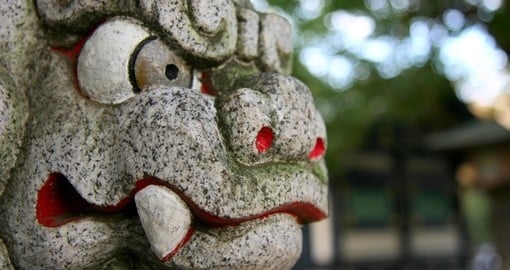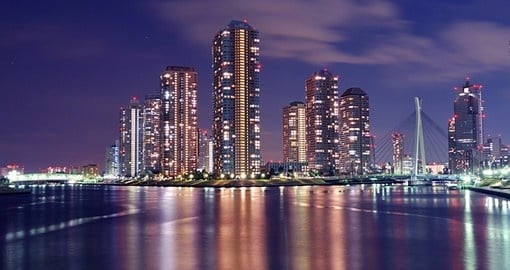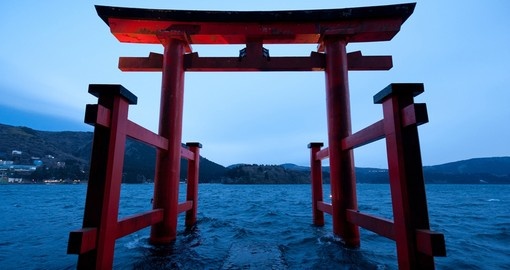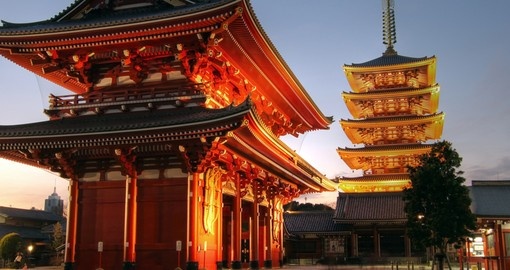Japan History
The first human inhabitants of Japan are believed to have existed around 35,000BC, however, Japan only began to appear in written histories in the fifth century AD. The fourth century saw Japan unified under the Yamato Dynasty in Nara. The basis of this dynasty was Shintoism - a faith found only in Japan and centred on the worship of nature, ancestors and ancient national heroes. Despite the popularity of Shintoism, Buddhism began to be introduced to Japan in the sixth century by China and Korea.
Buddhism began to flourish in the seventh century mainly because of Prince-Regent Shotuka. He sent Japanese scholars to China to learn the ways of Buddhism and constructed many temples including the Horyuji Temple near Naro which is said to contain the oldest wooden structure in the world. Under Shotuka, many political reforms took place including the establishment of a constitutional government.
Eighth-century Japan is known as the Nara Period which saw seven successive emperors in seventy-seven years. Following the Nara Period was the Helan Period which lasted until the twelfth century. This era was one of prosperity and peace with the noble population investing heavily in the arts and culture. This period in Japanese history saw the establishment of a writing system and the Tale of Gengi - the world’s first novel was written. However, as clans became more prosperous, a desire for more power began to grow resulting in civil wars.
The Genji clan emerged victorious and their leader Yoritomo claimed power. A military government was built known as Kamakura and Yoritomo became Japan’s first shogun (military leader). This marked the beginning of 700 years of shogunate in Japan as well as the beginning of the warrior caste known as samurais. After the fall of Kamakura in 1336, a new feudal government was established. As a result of this new system, feudal lords began to vie for power engulfing the country in civil wars that lasted for over a century.
The seventeenth century introduced a policy of isolation banning the majority of international trade, allowing the population of Japan only small glimpses of the rest of the world for the next two centuries. This isolation came under threat in the 19th century by a budding commercial economy. The economy was given a boost in 1853 when Commodore Perry of the US Navy forced a trade agreement with the US. The result was a Japanese culture desperate to catch up to the rest of the world.
Fighting with the Allies in the First World War allowed Japan to widen and expand territorial powers. However, the occupation of Manchuria in 1931 received harsh criticism from other international powers. Japan left the League of Nations two years later and signed the Tripartite Act of 1940 becoming an Axis power. The attack on Pearl Harbour in the Second World War brought the US into the war. As a result of this, atomic bombs were dropped on Hiroshima and Nagasaki, forcing Japan to surrender. For a nation that had practiced isolation for so long, this was the first time it had ever been occupied by a foreign power.
Post WWII saw Japan adopt a democratic constitution based on the people, guaranteeing human rights. Japan was granted UN membership in 1956 and hosted the 1964 Summer Olympic Games, showing off a modern country. The beginning of the 21st century signaled positive growth that meant economic recovery from a mid-1990s recession. However, the largest earthquake in the nation’s history triggered a tsunami that shocked Japan in March 2011, marking one of the worst disasters in the history of nuclear power. Japan is steadily working to recover from the devastation of 2011.
Japan Travel Information
At Goway we believe that a well-informed traveller is a safer traveller. With this in mind, we have compiled an easy-to-navigate travel information section dedicated to Japan.
Learn about the history and culture of Japan, the must-try food and drink, and what to pack in your suitcase. Read about Japan's nature and wildlife, weather and geography, along with 'Country Quickfacts' compiled by our travel experts. Our globetrotting tips and visa and health information will help ensure you're properly prepared for a safe and enjoyable trip. The only way you could possibly learn more is by embarking on your journey and discovering Japan for yourself. Start exploring… book one of our Japan tours today!
Extend Your Trip
After your Japan tour, consider taking the time to visit other destinations. Goway offers exciting China vacation packages, India tours and Thailand vacation packages plus a comprehensive selection of vacation packages in many other Asian countries.
Book yourJapan tour with Goway!
 ASIA by Goway is an exclusive division that specializes in planning and organizing Japan tours, vacations and experiences. Choose from a simple city stopover, a stay of distinction, a small group tour, a stay of distinction, an independent travel module and much more. We want to be your first choice when next you go globetrotting to Japan.
ASIA by Goway is an exclusive division that specializes in planning and organizing Japan tours, vacations and experiences. Choose from a simple city stopover, a stay of distinction, a small group tour, a stay of distinction, an independent travel module and much more. We want to be your first choice when next you go globetrotting to Japan.
Get a Trip Quote Order a Brochure





















